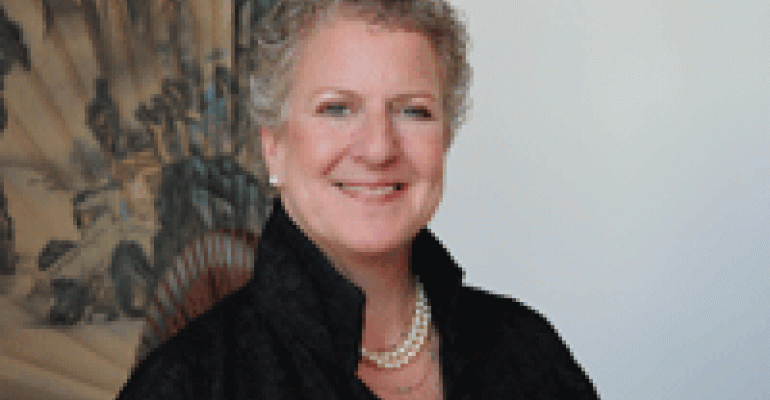The giving season is here, but what’s being given, at least by philanthropic-minded high-net-worth clients, is changing.
The standard gift to a charity or foundation has traditionally been a highly-appreciated, publicly-traded security. But increasingly, wealthy clients are donating non-cash assets such as diverse as private property, businesses to even commodities such as soybeans or timber. Then there are the donor-advised funds. In addition, there has been a dramatic rise in the use of alternative asset classes such as hedge funds and private equity as investments in charitable accounts. In short, there are plenty of ways to give.

Donations of non-cash assets, also described as alternative or complex assets, to Fidelity Charitable, the nation’s largest donor-advised fund with $5 billion, has risen about five-fold in the past year, from $12 million through the end of the third quarter of 2010 to $64 million through the end of September.
The amount of money invested in alternative investments at Schwab Charitable, including hedge funds and private equity funds, that are appropriate for endowment style charitable accounts has climbed more than tenfold in five years – from $40 million in 2006 to $480 million to date this year.
Hard economic times and the appeal of maximizing tax benefits are driving the growing popularity of non-cash donations stems, according to industry experts.
Donors Low on Cash
“The actual cash available for donors has dwindled in the last few years, but they are still looking for creative ways to support and fulfill their charitable goals,” said Betsy Brill, president of Strategic Philanthropy, a Chicago-based advisory practice that works with donors and wealth managers.

Donors can usually receive a full fair market value deduction for their non-cash asset, and when the receiving charity sells the asset, it does not have to pay a capital gains tax, said Bryan Clontz, president of Jacksonville, Fla.-based Charitable Solutions, a firm that specializes in helping charities who receive alternative assets.
Real property is “by far” the most commonly donated non-cash asset, followed closely by privately-held business interests, according to Clontz. Donating all or part of a closely held business can be particularly advantageous because the cost basis is usually extremely low, Clontz noted. Non-cash assets given away by wealthy philanthropists have also included wine and art collections, furniture, soybeans, timber holdings, mineral rights and even a partial interest in a National Football League team, Clontz said.
“People are seeing that there’s a real need for charitable giving now, and they’re looking to advisors for optimal ways to donate,” Clontz said. “In the old days, an advisor would look for a stock with the most appreciation. But today there just isn’t that much appreciated stock available, and a wealth manager needs to look much further across the balance sheet to find a more non-traditional asset that can be advantageous to clients and their charities.”
Clients Accomplish Multiple Objectives
Indeed, wealth managers are increasingly able to help clients by taking advantage of a broader range of assets. For example, David Hirsch, a private banking director at Credit Suisse Securities in Chicago, recently worked with an 80-year widower who donated his house to Fidelity Charitable. By doing so, Hirsch said, the client was able to accomplish multiple objectives, including disposing of his house and taking a tax deduction at the appraised value before year-end, without having to wait for a sale in a weak real estate environment.
Making the gift to a donor advised fund, like Fidelity Charitable, gave his client a charitable tax deduction in 2011, Hirsch noted. “It’s also worth noting that the donation provided him with time to decide how to disburse the funds to specific charities in the future,” Hirsch said, “not the usual scramble done at year end by those with foundations and a year-end deadline to disburse funds.”
Non-cash assets can also have an impact on a charitable organization that a liquid asset can’t, noted wealth manager Karim Ahamed, a partner at HPM Partners in Chicago, citing a client who donated a commercial property he owned to a charity. “That real estate can be rented out and is able to provide the charity with a steady stream of income,” Ahamed said.

Financial advisors also need to be aware of caveats when working with non-cash assets as charitable gifts. For example, under Internal Revenue Service rules, donors of illiquid assets must pay for and obtain a qualified appraisal of the asset – and appraisals with high valuations are more desirable.
Donors of alternative assets also have to prepare to take other extra steps as well, said Karla Valas, managing director of the complex asset group for Fidelity Charitable. For example, donors who want to transfer their interest in a private company to a fund need to consult with a corporate attorney to make sure legal requirements are met, such as governing documents and board approval.
Advisors should also pay close attention to the timing of the donation of a non-cash asset, said Hirsch. “It’s important to be aware of expected future value,” Hirsch said. “If the asset has the ability to appreciate dramatically, there might be some value in waiting.”






